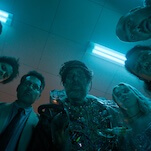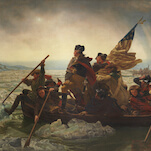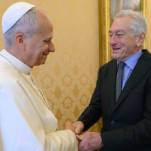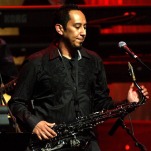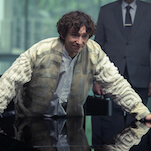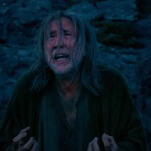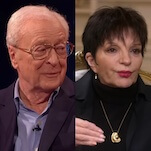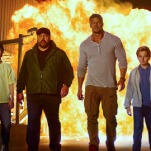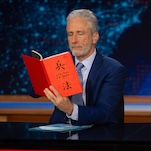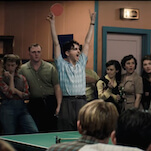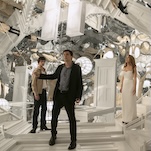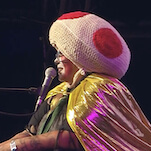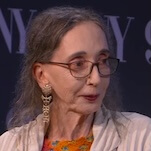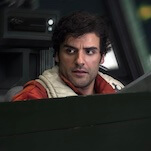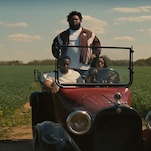Imagine the Super Bowl, or Wimbledon, or a World Cup final where a film cast and crew took to the field during the global sporting event. The rest of the match was set to play out, but there, in the corner, was a separate court making it look like a fictional participant was actually part of the action. Then imagine that the resulting film wasn’t just named after the sport itself, but used the exact logo that represents the organization to billions of its fans. Would this be a mere marketing exercise? Would it point to a way of cinematically expanding the way the coverage of these events is produced? Or perhaps it could both celebrate the sport for existing fans, and draw others in through the glitz and glamour of a Hollywood blockbuster, engaging neophytes and experts alike with a thrilling symphony of speed. This is the basis for Jerry Bruckheimer’s latest massive endeavor, F1, with the mega-producer once again teaming with Top Gun: Maverick‘s helmer Joseph Kosinski to do on the racetrack what fighter jets did in the sky.
Once again Kosinski has stretched the bounds of capturing kinetic action, placing numerous cameras on actual racecars (re-sculpted F2 cars modified by Mercedes AMG, for those keeping track of what’s on the track), and thrusting audiences into the heart of automotive combat. Even for those that don’t give a damn about actual F1 nonsense, the story is thrilling and engaging.
Casting Brad Pitt as Sonny Hayes, an aging yet committed driver getting his last shot at F1 glory, is a stroke of genius; over two seasons, the actor shot footage in and around various races in order to capture a glimpse into the world of racing. The tale of the old man that must help a young upstart, Noah Pierce (Damson Idris), struggling with developing his own talents has obvious echoes, from Maverick to basically every Campbellian myth ever crafted.
Kerry Condon plays the technical director of the fictional Apex Grand Prix outfit, Kate McKenna, and conveniently is not only the first woman in this role in the sport’s history, but also a mere two decades younger than the film’s hunky lead who, of course, needs a love interest. She’s an amazing talent, and like former world champions forced to drive non-competitive vehicles, she valiantly gives her all despite the script’s obvious flaws.
In this version of the sport, APXGP is being run into the ground. Hayes’ former teammate/rival Ruben Cervantes (Javier Bardem) must, preposterously, take his bottom-of-the-timesheet outfit to the top for at least one race so as to not lose control of the team he started. A conniving board member (Tobias Menzies) smarms his way through the film, hoping for his own team to lose in order to wrestle it away from Ruben’s grasp. Cervantes’ Hail Mary? He drafts Hayes into the sport for the final races of the season (superlicense considerations be damned) to act as Jedi Master to his fiery yet wayward Padawan learner. Unfortunately, racing drivers aren’t known for their monk-like equanimity, and the clashes between teammates, endemic to the actual sport, rise to near catastrophic levels.
These collisions are thrillingly captured and—ignoring the massive breaking of regulations, as well as the need to dumb down what’s a decidedly nerdy sport for a general audience—there’s plenty to admire about what Kosinski and his collaborators pull off. Sweeping 180-degree flips of cameras capturing actors traveling at speed are astonishing, and some clever CGI work is used to reskin actual cars from actual events with Apex liveries. To see the launch up the famous Eau Rouge climb at Belgium’s Spa-Francorchamps course may be worth the price of admission for even the most jaded petrolhead, and the giant IMAX screen allows one to gorge on the gorgeous visuals.
The actual sport of Formula 1 has pedantry built into its very nature—the “formula” part refers to an ever-changing set of rules that dictates everything from the maximum weight of the car, to the deflection amount of various aerodynamic surfaces, or the amount of energy the hybrid engine’s electrical component can emit as a boost during a given lap. The sport is a boondoggle for billionaires combined with the nerdiness of a sci-fi convention. Celebrities and influencers crowd the grid while the “real” fans worry about floor upgrades, suspension geometry, and which tire component is going to be chosen during a specific qualifying session. F1 does its absolute best to cut through the noise of all this sporting backstory, employing Sky TV’s broadcast pair of Martin Brundle and David Croft to explain what the hell’s happening. The awkward quality of their broadcast feels alien to anyone that usually hears their more elegantly realized off-the-cuff commentary, and is more akin to the overtly expositional dialogue heard in the podracing sequence of The Phantom Menace.
F1 feels, at times, like an underbaked episode of Netflix’s docuseries Drive To Survive—albeit one with Top Gun-style editing, incredible access, and enough drama to make someone bored of the racing become enthralled with the gladiatorial characters behind the wheel of these incredible machines. You can add all the trappings of a Grand Prix weekend, the cameos of those unknown outside the fandom, and still some of F1 feels as deflating as Kimi Raikkonen’s tire at the final lap of the 2005 European race.
One can revel in the slick suaveness of Pitt’s performance, yet be saddened by the nearly empty take by an earnest Idris, struggling to be more dimensional than the portrait that hangs outside his garage. The love story is idiotic, and the corporate espionage is child’s play when compared to modern Formula 1 machinations (they could have asked Fernando Alonso, who makes an appearance in film, as he’s been tangentially tied to a couple of famous ones). Yes it’s kind of fun to see McLaren and Ferrari team bosses joust with the fictional APXGP principal, but this often feels like an afterthought, like stickers on an already crowded livery.
And yet, there’s one sequence that F1 manages to completely rock, and that’s at the Rolex 24 at Daytona. Shot in the actual race environment like the competing, Eurocentric sport, it’s on an oval track in Florida that the film’s visual prowess and stark narrative decisions actually makes sense. So, while F1 may not live up to the excitement of the actual sport when at its best (and, to be fair, many a race can prove to be processionally dull), and the close integration with the sporting body may have hindered being able to truly dive into the psyches of these drivers and the convoluted financial means by which the teams operate, this is a marketing exercise that still provides vicarious thrills. But so is Drive To Survive, and Kosinski’s film—despite being a wild ride—doesn’t manage to perform its particular magic trick as effectively.
Director: Joseph Kosinski
Writer: Ehren Kruger
Starring: Brad Pitt, Damson Idris, Kerry Condon, Tobias Menzies, Javier Bardem
Release Date: June 27, 2025








